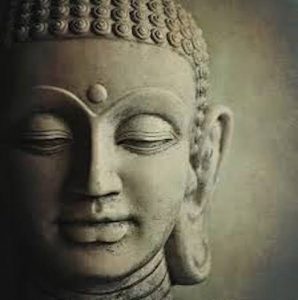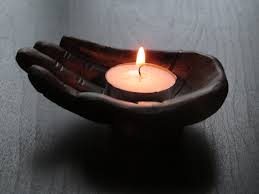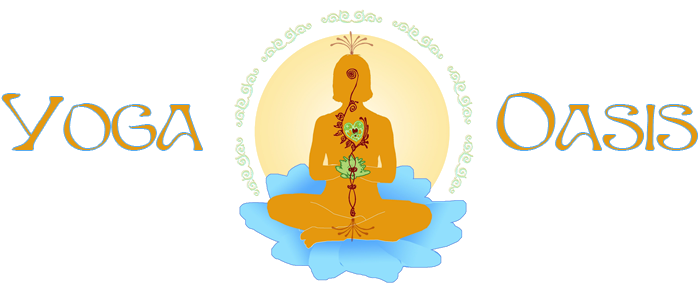Any activity worthy of our time, is naturally in competition with all the other activities coming in and out of our desirous mind, and let’s face it, sitting and doing nothing is not very sexy, when compared to say… eating, drinking, chatting, sex, striking something off our ‘to do’ list, and well…. just about anything, right? Why is this so?
We make millions of choices each day, moment to moment, from the realm of the subtlest energies of all, our thoughts. The thinking mind feeds on dancing around the realms of fantasy, past missives, future ventures, and anywhere but the present moment. The mind is naturally outward bound; believing its relevant when doing something, anything… oblivious of how particular thoughts escalate anxiety levels, contribute to being in a funk, or just manufacture endless confusion and chaos.
Let’s face it, most of our minds are out of control; we are so identified with our thoughts as being ‘me’, that when asked to concentrate inward, to something as bland as our breathing, the mind protests… coming up with incredibly creative reasons as to why not to meditate. Let it suffice it to say that the monkey analogy is apt here; if untrained, a monkey will run rough shod over you. Just know you are up against a formidable opponent – the personality identified thinking mind will resist any attempts at focusing inwards; basically, like a monkey, its happy just as it is, running about, harry–scary, thank you very much!
However, your higher mind witnesses the repercussions of an over-active mind and knows, without a doubt, that a trained mind serves the whole being, contributing to a more relaxed body, balanced emotions and clear, discerning thoughts. So what to do????
Well, in the last four newsletters I explored 4 of the 5 guidelines to Consistent Meditation: 1. Starting 2. Keeping the Why Alive 3. Commit and 4. Support. If you missed them, just click on the highlighted titles to access and read.
But now we dive into the last Guideline: #5 Be Willing to Evolve the Practice.
 My inner critic used to love to chastise me about ‘never sticking to anything’; I’d flit around from one career to the next (I’ve had at least 7), many boyfriends up until I was in my early 30’s, and this tendency is also reflected in the history of my meditation practice. It has changed a lot over time and that’s not only Okay, but fantastic. I can be disciplined and also recognize I get bored unless I dive deep and broad, so I embraced my need for change by exploring differing methodologies, and it has served me well. I see it now as evolving my practice, and me!
My inner critic used to love to chastise me about ‘never sticking to anything’; I’d flit around from one career to the next (I’ve had at least 7), many boyfriends up until I was in my early 30’s, and this tendency is also reflected in the history of my meditation practice. It has changed a lot over time and that’s not only Okay, but fantastic. I can be disciplined and also recognize I get bored unless I dive deep and broad, so I embraced my need for change by exploring differing methodologies, and it has served me well. I see it now as evolving my practice, and me!
So what transpired? My meditation practice would feel stagnant, the benefits seem to level out… so, instead of quitting, I’d shift to a different type of meditation. Or, a situation would arise and my current practice wasn’t working – typically I lost the concentration due to challenges in my life. I believe it’s essential that there are so many options, not only for fiery constitutions like mine, but also for the many differing personalities types out there – there is a style and method for everyone, and some forms address particular life challenges more successfully.
When I came to meditation, I was psychologically a mess, so the key portal into meditation was pranayama, focusing my mind on deep abdominal breathing, then mastering various forms of breath work that required a lot of focus through lengthening and holding breath in or out, while remaining relaxed. This is the foundation for developing a meditation practice: focus and concentration. Eventually, I could watch my breath just as it was (no manipulation), with some level of success.
This is the premise of ‘insight meditation’, a type of ‘object’ focus that begins with using the breath (as the object) to bring your attention back to, when it strays. Once some amount of concentration develops, one can extend the mindfulness to notice physical sensations, emotions, and thoughts, acknowledging them, and returning to the object. There are many other forms of object meditation, some handed down through various Yoga Lineages,
physical sensations, emotions, and thoughts, acknowledging them, and returning to the object. There are many other forms of object meditation, some handed down through various Yoga Lineages,  including ‘tratak’ (candle gazing), using specific visual images (chakras, deities…) and imagining colors/forms within specific areas of the body. I’ve used a mala and recited sacred words, chanted, made and walked labyrinths as well as studied and practiced various styles of Buddhist meditation: Walking, Meta-Meditation and Analytical, each of which have had profound influence upon my understanding of the amazing tools available for developing the witness awareness and flossing the mental garbage that accumulates daily.
including ‘tratak’ (candle gazing), using specific visual images (chakras, deities…) and imagining colors/forms within specific areas of the body. I’ve used a mala and recited sacred words, chanted, made and walked labyrinths as well as studied and practiced various styles of Buddhist meditation: Walking, Meta-Meditation and Analytical, each of which have had profound influence upon my understanding of the amazing tools available for developing the witness awareness and flossing the mental garbage that accumulates daily.
 In addition, one can positively influence the psyche by harnessing beneficial qualities, overlaying negative mental habit patterns that keep us in our conditioned thought patterns of being unworthy, fearful, impatient, etc. All these qualities can be neutralized with an antidote: compassion, love, patience, so in addition to flossing out extraneous mental clutter, we over-write programming that perpetuates harmful reactive patterns– like sending compassion to the angry bus driver who snarls at you, instead of jumping down his throat (even if only in your mind’s eye)… These types of meditation practices have the potential to transform our social conditioning and evolve consciousness so we are kinder, more compassionate and centered within peace, which we then resonate into all circumstances. It is powerful medicine for healing the individual and the world.
In addition, one can positively influence the psyche by harnessing beneficial qualities, overlaying negative mental habit patterns that keep us in our conditioned thought patterns of being unworthy, fearful, impatient, etc. All these qualities can be neutralized with an antidote: compassion, love, patience, so in addition to flossing out extraneous mental clutter, we over-write programming that perpetuates harmful reactive patterns– like sending compassion to the angry bus driver who snarls at you, instead of jumping down his throat (even if only in your mind’s eye)… These types of meditation practices have the potential to transform our social conditioning and evolve consciousness so we are kinder, more compassionate and centered within peace, which we then resonate into all circumstances. It is powerful medicine for healing the individual and the world.
 Each form of meditation provides different gifts; I appreciate how each unfolded in response to particular life challenges. Meta-meditation helped me release habitual thoughts, speech and actions; beliefs, judgments and self-righteous perspectives entrained from childhood slowly dissolved combative reactions to reflective responses. For example, I’d noticed some knee-jerk reactions of anger to situations that frustrated me, and engaging a series of 4 phrases in my mind focused upon loving-kindness, in alignment with my breath, helped dissolve these reactive patterns over time. I came to experience more calm in situations that heretofore would have turned on the feisty warrior in me.
Each form of meditation provides different gifts; I appreciate how each unfolded in response to particular life challenges. Meta-meditation helped me release habitual thoughts, speech and actions; beliefs, judgments and self-righteous perspectives entrained from childhood slowly dissolved combative reactions to reflective responses. For example, I’d noticed some knee-jerk reactions of anger to situations that frustrated me, and engaging a series of 4 phrases in my mind focused upon loving-kindness, in alignment with my breath, helped dissolve these reactive patterns over time. I came to experience more calm in situations that heretofore would have turned on the feisty warrior in me.
 Processing difficult emotions while traversing my divorce was made possible by guided meditation focusing upon positive qualities – I was not able to sit and focus upon my breath, or any other object – I had to be guided to move my heart-mind into a place of compassion. Over time, I was able to focus inward enough and engage the classic Buddhist compassion meditation on my own, which turned around the anger and resentment I was feeling via directing compassion towards others (including my former spouse), and myself. This process was essential to healing. Not so long ago, scoliosis in my back was creating severe chronic pain, and when this was paramount in my daily experience, mindfulness towards sensation, supported me to be present in my body, releasing any tendency for emotions and thoughts to add more suffering onto physical pain.
Processing difficult emotions while traversing my divorce was made possible by guided meditation focusing upon positive qualities – I was not able to sit and focus upon my breath, or any other object – I had to be guided to move my heart-mind into a place of compassion. Over time, I was able to focus inward enough and engage the classic Buddhist compassion meditation on my own, which turned around the anger and resentment I was feeling via directing compassion towards others (including my former spouse), and myself. This process was essential to healing. Not so long ago, scoliosis in my back was creating severe chronic pain, and when this was paramount in my daily experience, mindfulness towards sensation, supported me to be present in my body, releasing any tendency for emotions and thoughts to add more suffering onto physical pain.
So meditation not only relaxes the mind and relieves stress, it is a balm for particular challenging circumstances arising at different times in your life. I believe any form of meditation can be useful for most situations, but tapping into various forms, may make the difference of being a meditation dropout or being consistent. Furthermore, when you stay the course, your awareness continues to expand, consciousness evolves, so you are less attached to your ego-personality, and operate more from the inner neutral witness, observing all – life simply becomes brighter in good times, and easier to negotiate during difficult times. So be willing to try different forms of meditation when what you are doing isn’t effectively dissolving stress, helping you work with specific challenges or you feel stagnant in your life perspective.
What is happening presently in my practice? I vary it! Sometimes chakra or insight meditation, sometimes I use a mala, and also, I’ve come to understand how important making art/being creative is, so I’m focusing on creating and teaching how to make and use mandalas for meditation. Engaging the right brain in a creative process brings balance to the nervous system, especially essential within a culture that is left-brain dominant. Using geometric shapes, tapping into sacred geometry and simply being in the space of creativity allows us to set the stage to direct and focus attention inwards – aka meditation. Mandalas can be personal, unique and used in alignment with felt qualities (like peace, compassion…) as an accessible tool for meditation. I hope you’ll join me in the future to create your own valuable meditation mandala.
sometimes I use a mala, and also, I’ve come to understand how important making art/being creative is, so I’m focusing on creating and teaching how to make and use mandalas for meditation. Engaging the right brain in a creative process brings balance to the nervous system, especially essential within a culture that is left-brain dominant. Using geometric shapes, tapping into sacred geometry and simply being in the space of creativity allows us to set the stage to direct and focus attention inwards – aka meditation. Mandalas can be personal, unique and used in alignment with felt qualities (like peace, compassion…) as an accessible tool for meditation. I hope you’ll join me in the future to create your own valuable meditation mandala.
What meditation practice(s) are you doing? What kinds are you interested in knowing more about? What do you think would best serve your needs right now? Let me know…. Comment below please.
